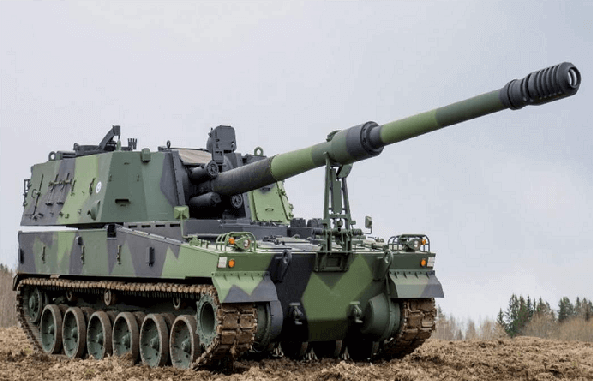India may have deployed its K9 ‘Vajra’ self-propelled howitzers during the Ladakh standoff with China last year, but critics say the weapon could be vulnerable to anti-tank guided missiles (ATGMs).
India is among seven nations that use the Korean-origin K-9 howitzer at present. The Indian military also conducted high-altitude trials of the weapon system.
The Indian K-9 VAJRA-T is the domestic version of the South Korean self-propelled 155mm/52cal Howitzer (SPH) ‘K-9 Thunder’ designed and developed by the Agency for Defense Development and Samsung Aerospace Industries. The weapon system is now manufactured by Hanwha Defense.
Besides India, K-9 is used by six other nations — Turkey, Australia, Estonia, Norway, Finland, and Egypt.
What is a Self-Propelled Howitzer?
A self-propelled howitzer is a howitzer on wheels. It is equipped with its own propulsion system to move towards its firing position and used for long-range indirect bombardment support on the battlefield. An SPH has around the same range as its non-wheeled counterparts.
Modern self-propelled artillery vehicles may superficially resemble tanks (much like the K-9 does), but they are generally light-armored. However, they protect their crews against shrapnel and small arms and are therefore usually included as armored fighting vehicles. Many are equipped with machine guns for defense against enemy infantry.
However, K-9’s crew is protected by an all-welded steel armor construction which is rated to withstand 14.5 mm armor-piercing rounds, 152 mm shell fragments, and anti-personnel mines, and overall nuclear, biological, and chemical protection.
The K9 has the ability to fire its shells in MRSI mode (Multiple Rounds Simultaneous Impact). In the MRSI mode, the K9 is able to fire three shells in under 15 seconds — 1 shell every 5 seconds — each in different trajectories so that all of the shells land at their target at the same time.
This is particularly effective in surprise bombardment tactics, especially against enemy fortifications and strongholds in the open.
It is also supplemented with an ammunition resupply vehicle, called the K-10. Built on the K9 platform, it shares the same chassis as K9, preserving K9’s mobility, and can follow the main artillery battery without lagging behind.

It has a maximum transfer rate of shells of 12 rounds per minute, and a maximum load of shells is 104 rounds. The reloading process is fully automated and is done through a munition bridge on the K10 that extends out to lock itself into a reception hole located at the rear of the K9.
This allows the unit to rearm itself under harsh combat conditions without the crew having to expose themselves to the combat environment.
The Flipside
While the gun can be deployed for firing in just one minute, it isn’t stable enough to be fired on the move. The system was extensively used by Turkish forces in Syria, in cross-border invasion targeting Kurdish militias.
Turkey operates its T-155 Firtina, a locally produced version of the South Korean K-9. The Firtinas are long-barreled 155 mm howitzers with a range of 30 to 40 kilometers depending on the ammunition.
The Firtinas were first deployed against PKK forces in Iraq in 2008. Later, they were used in the conflict in Syria.
On April 30, 2016, the Islamic State released a video depicting AT-13 Metis-M anti-tank guided missiles knocking out three Firtinas.
“Like most self-propelled artillery, the Firtina’s armor is for stopping shrapnel and small arms, not guided missiles — leaving one to wonder why the vehicles were in such an exposed position in the first place,” Sebastien Roblin wrote in a piece for War Is Borning.
Nevertheless, the K9 has seen harsh combat environments in the Middle East and the cold climate of Korea. It was made to operate in the rugged environment of the Demilitarized Zone with North Korea.
This system has been well received by the Indian Army, as part of its long-staggered artillery modernization process and increases its firepower multiple times with the gunners.
Follow EurAsian Times on Google News




